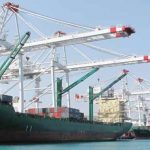Road to riches
Morocco believes that a strong automotive manufacturing base can bring employment and export currencies. Fiat and Renault share that vision and is it now becoming a reality.
Until recently, Morocco was like most emerging markets when it came to cars – they were mostly imported. For the kingdom, the first step towards car manufacturing came in 1960 with its first automobile assembly plant, built for Somaca near Casablanca. The going was tough for the first 35 years, until an agreement was signed with Fiat in 1995 to assemble some models.
“We had to compete against a massive influx of used car imports, up to 90,000 vehicles per year,” explains Larbi Belarbi, the head of Somaca and also of the Moroccan auto federation, AMICA (L’Association Marocaine pour l’Industrie et le Commerce de l’Automobile).
In 2009, fully 93% of car registrations were new vehicles, whereas that figure had only been 32% in 2001. Alas, the Italian honeymoon only lasted until 2002 when Somaca ran into difficulties. Thankfully, Renault saw an opportunity and in 2003 acquired Somaca for the assembly of its Logan model and various light commercial vehicles.
The next step was Renault’s decision in September 2007 to invest on a massive plant near Tangier, capable of producing up to 400,000 vehicles per year in the near future. The investment included a first phase of €350 million ($435 million), and a second phase of €200 to €400 million ($250 million to $500 million) on a massive plant near Tangier. The Moroccan government was determined not to repeat the mistakes that caused the Fiat failure.
“The government realized it needed a strong auto manufacturing cluster to truly become a worldwide actor in the area,” explains Mr. Belarbi. “So the Tangier Free Zone was conceived with Renault as its queen bee and a swarm of component suppliers from all corners of the world as her attendants.”
Moving up the value chain
Formerly all cars assembled in Morocco were CKD (complete knock down) with parts delivered to Morocco from other countries in pieces and assembled locally. Gradually local components started to be manufactured and used, such as electric wiring and textile seats. Local factories also started to do metal stamping for the bodywork and machining for engine parts. Today, about threequarters of the cars produced in Morocco are from local content.
The country’s two assembly plants are located in Tangier, where the Renault Logan is produced, and in Casablanca, where Somaca produces various models. Some of this production is exported to Spain and other European countries, as well as to North and sub-Saharan Africa.
 Since 1996, the local production of automotive components has jumped from almost €200 million to over €800 million ($250 million to $1 billion) in 2009. The increasing use of local content has increased the number of component manufacturers in Morocco. These now supply both domestic and foreign markets, Spain in particular.
Since 1996, the local production of automotive components has jumped from almost €200 million to over €800 million ($250 million to $1 billion) in 2009. The increasing use of local content has increased the number of component manufacturers in Morocco. These now supply both domestic and foreign markets, Spain in particular.
Moroccan component manufacturers have some strong competitive advantages, for example in areas requiring intensive use of skilled labor. These include electronic components, cloth seats and electric cabling, which itself accounts for more than 50% of Morocco’s automotive exports by value.
Morocco’s labor costs are highly competitive as well, about a fifth of those in Spain and less than one-tenth of those in France.
Even so, Morocco frets about the difference in levels of labor productivity and automation (i.e. robots), which are substantially higher in Spain. Moreover, local suppliers need to strengthen their steel foundry and stamping capabilities to compete in those areas.
Government strategic impulse
The Moroccan government has never been shy about its automotive ambitions. The sector is viewed as the top priority in the national industrial plan. Much of the funding for local and foreign investors comes from the Hassan II Fund, which provides subsidies of 50% for land acquisition, 30% for plant construction or acquisition, and 10% for equipment.
 For the Ministry of Industry which oversees the fund, these investments are designed to make vehicle assembly a permanent part of the Moroccan industrial landscape, as well as to upgrade component manufacturing to international standards and stimulate R&D efforts on upstream activities. The plan is for Moroccan-designed and built vehicles to start rolling off local assembly lines one day soon.
For the Ministry of Industry which oversees the fund, these investments are designed to make vehicle assembly a permanent part of the Moroccan industrial landscape, as well as to upgrade component manufacturing to international standards and stimulate R&D efforts on upstream activities. The plan is for Moroccan-designed and built vehicles to start rolling off local assembly lines one day soon.
Morocco has traveled a long way in the past 50 years. It now boasts 85% car ownership per capita, virtual autonomy in producing its own vehicles, and is even gaining valuable foreign currency from vehicle and component exports. ●
For more information:
AMICA (Moroccan Association of Auto Manufacturers and Distributors)
Ministry of Industry, Trade and New Technologies



